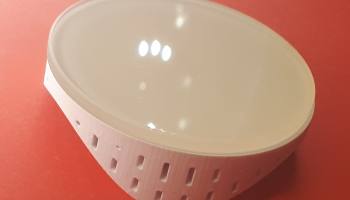
The ICARUS program will focus on the development of 3D-printing of Freeform active mirrors as well as the development of curved detectors, to combine such breakthrough technologies into smart, compact, affordable and high performance optical systems for astronomy and beyond.
-
Team members
Simona LOMBARDO Post doc – Curved Sensors for Astronomy
Eduard MUSLIMOV – Post Doc – Combining Freeforms and Curved Sensors
Mélanie ROULET – PhD Thesis – 3D printing for astronomical mirrors
Xiaopeng XIE – PhD Thesis – 3D printing of Variable Curvature Mirrors
Thibault BEHAGHEL – Engineer – Curved Sensors
Kelly JOAQUINA – PhD Thesis – Curved Sensors
Emmanuel HUGOT – PI -
Summary
Enabling disruptive technologies has always been crucial to trigger revolutionary science discoveries. The daring challenges in astronomy and astrophysics are extremely demanding in terms of high angular resolution and high contrast imaging, and require extreme stability and image quality. Instruments based on current classical designs tend to get bigger and more complex, and are faced to ever increasing difficulties to meet science requirements.
This 5-years project proposes breakthrough compact optical architectures for the next generation of giant observatories. The project focus on the niche of active components and is structured in two main research pillars to :
(I) Enable the use of additive manufacturing (3D-printing) to produce affordable deformable mirrors for VIS or NIR observations,
(II) Pave the road for a common use of curved and deformable detectors.
Both pillars are extremely challenging, the fields of detectors and optical fabrication being driven by the market. For that we will orientate the activities towards a mass production method.
To maximize the impact of this high gain R&D, the pillars are surrounded by two transverse activities : (i) design and optimization of a new zoo of optical systems using active mirrors and flexible detectors, and (ii) build a solid plan of technology transfer to end-user industrial companies, through a patenting and licensing strategy, to maximize the financial return and then perpetuate the activities.
The pathway proposed is mandatory to develop affordable components in the near future, and will enable compact and high performance instrumentation. These high potential activities will dramatically reduce the complexity of instruments in the era of giant observatories, simplify the operability of systems and offer increased performances.




